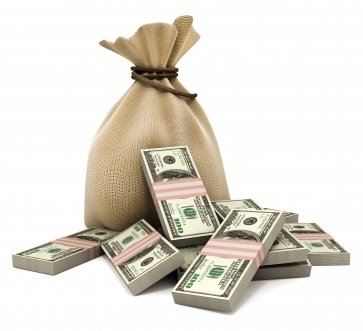 During my Kindle book publishing experiment, I stumbled upon something quite interesting. Price really doesn’t matter! Playing with one of my titles, I adjusted it from $0.99 to $2.99. The sales remained the same and no one complained. It went against all conventional eBook wisdom.
During my Kindle book publishing experiment, I stumbled upon something quite interesting. Price really doesn’t matter! Playing with one of my titles, I adjusted it from $0.99 to $2.99. The sales remained the same and no one complained. It went against all conventional eBook wisdom.
In fact, I actually made more money and sold more copies by raising all of my titles. Here are just a few of my observations and speculations as to why this happened:
Entertainment isn’t something people worry about
Earlier today I was browsing for a quick fiction read to plow through this afternoon. I ended up stumbling on An Occurrence in Crazy Bear Valley. It’s a 108 page story filled with cowboys fighting zombie dinosaurs and crazed Sasquatches. That’s something light and fun that I’d love to kill an afternoon with.
The book cost $4.95, a little steep for a short read but I figured it was worth it. Five bucks for a few hours of fun is a tiny investment.
When most people buy a book about finance, taxes, weight lifting, or home repair, they want the best book at the cheapest price. But when those same people are looking for something fun they’ll pay less attention to the cost. There are millions of crummy detective novels, billionaire romances, and ghost stories. And they usually cost more than “serious”material that’s meant to educate you about something.
Comic books are about five bucks a piece. Buying an issue of Captain America will cost you more than a used copy of How To Argue And Win Every Time. One is a 20 page story where a man in tights punches Nazis and the other is a powerful book on negotiation that was written by an expert lawyer. The average person is willing to pay more for entertainment than they are on education. Keep that in mind when you’re pricing books.
A higher price tag indicates more value
The last $0.99 book I bought was written by James Altucher. Other than that, I can’t remember ever picking up a Kindle book that cost less than three dollars.
Dollar books carry a stigma of being poorly written and cheap. You can thank guys like Tim Ferriss for that. People see a generic title with that dollar price tag and they keep on walking.
Additionally, Amazon royalties are really screwy. Selling 100 copies of a $0.99 book would only earn you $35. Selling that same number of copies for a $2.99 read would net roughly $280. That’s a big difference!
Go a little higher on your price. It will make your book look better and will create bigger profit margins.
Kindle Unlimited users “save” money
If you sign up for Kindle Unlimited you can borrow certain books for free. Amazon then pays these authors between $1.33 and $2.50 per copy. If 10 people use this service to get your book, you make $13 to $25. With a $0.99 book that sells 10 copies, you’d only make $3.50.
By pricing these books higher, you can provide shoppers with an incentive to borrow rather than buy. While I’m not an expert on this, I have seen better lending rates once my books were repriced in the three dollar range. This ends up costing the customer nothing and you still get paid.
Frugal people are kept at bay
Every month my $0.99 books would get bought up and then returned. People would keep them for a day and then hand them back over, getting a full refund. It really made me mad.
Since I changed strategies this hasn’t happened. In fact, I haven’t had a single return all month.

If you cater to tight-wads, don’t be surprised when they’re too cheap to pay you.
Taking action is more valuable than money
While reading Tony Robbins’ book, Money, I learned something interesting. Most people will avoid taking action at any cost. There’s a story in the book about how the number organ donors in Scandinavia is significantly higher than it is anywhere else. And that’s due to the fact that Scandinavia countries ask citizens to “check the organ donor box if they do not want to be part of the program.” People are too lazy to make a simple pen stroke and, as a result, they end up getting enrolled as organ donors.
This story might not sound applicable to eBooks, but it is. Getting the client to click “Buy” is more important than the dollar amount. The same people who will buy a story at $0.99 are probably willing to spend $2.99. As long as you aren’t gouging the client, you’ll still make sales.